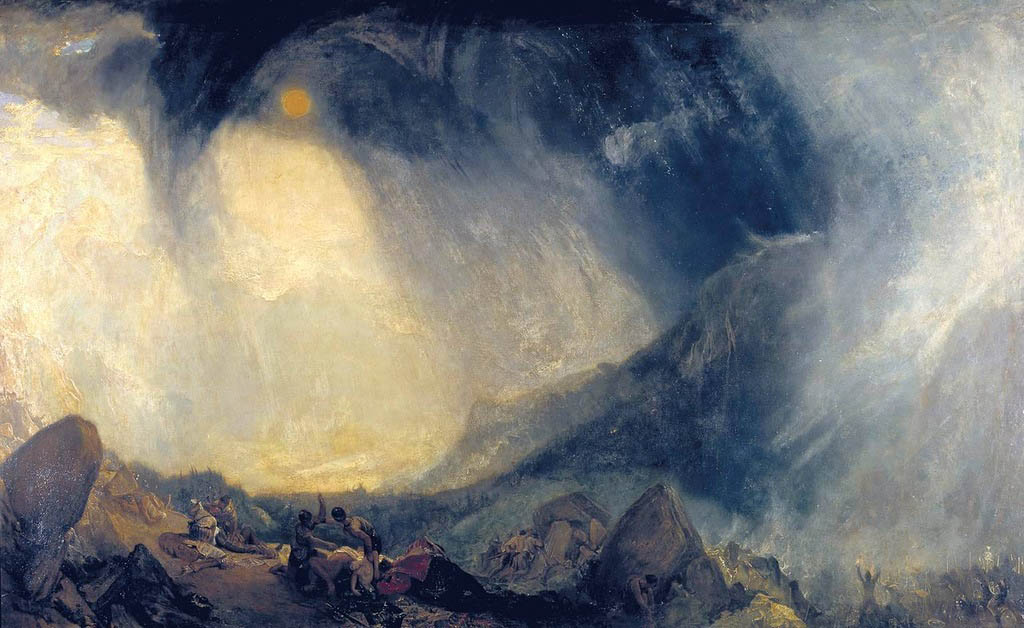SNOW STORM: HANNIBAL AND HIS ARMY CROSSING THE ALPS

- add to my gallery
- about the artist
- how to order a copy
- order a copy
The Artwork Description
In this painting Turner has combined his fascination with storms with his deep interest in the history of the ancient North African city state of Carthage. From 264-146 BC, Carthage fought a serles of wars with Rome, known as the Punic Wars, and Turner may have seen a parallel between the conflict of these two empires, and the long rivalry between England and France which culminated in the Napoleonic War which was at its height at the time of this painting.
The Carthaginian general Hannibal started the Second Punic War in 218 BC by sacking the Roman city of Saguntum in Eastern Spain. He then marched across Southern France, and in one of the most famous exploits in military history, crossed the Maritime Alps into Italy, crushed the Romans at a battle by the River Ticino and went on to win three more victories before lack of reinforcements, and a Roman threat to Carthage. forced him to return to Africa. Turner's picture evokes the difficulties and dangers encountered in the Alpine passes by Hannibal's army, complete with elephants, one of which can be seen against the horizon. Chief of these dangers is the great storm cloud, curving across the sky, about to descend on the hapless troops in the valley below. But in the foreground local Salassian tribesmen are also busy, murdering stragglers. Turner's carefully composed title for this painting indicates that the storm is as important an element in the work as Hannibal, and a story connected with it gives an important insight into Turner's sources of inspiration and working methods. In 1810 he was staying at Farnley Hall in Yorkshire with his patron Walter Fawkes, whose son recorded how one day Turner called him out to admire a thunderstorm. Turner was making notes of its form and colour on the back of a letter: 'I proposed some better drawing block but he said it did very well. He was absorbed - he was entranced. There was the storm rolling and sweeping and shafting out its lightning over the Yorkshire hills. Presently the storm passed and he finished. "There," he said, "Hawkey, in two years you will see this again, and call it Hannibal crossing the Alps".' The use of the back of a letter for recording the storm is typical. Throughout his life the information Turner took direct from nature was almost always of the sketchiest kind: his watercolours and oils were worked up from these sketches, from his prodigious visual memory and from his imagination. He recreated in intensified pictorial form those aspects of nature which most deeply moved him.
In the catalogue of the Royal Academy exhibition of 1812 Turner printed some lines of his own poetry to accompany 'Hannibal'. He described these lines as coming from his 'M.S.P.' (probably standing for Manuscript Poem) Fallacies of Hope. This was an epic poem which Turner composed intermittently through his life but which was never completed. The title of the poem indicates a pessimism which Turner seems to have found echoed in the story of Hannibal's triumph followed by retreat. The lines quoted dwell on Hannibal's difficulties rather than his victories and in the last line contain a warning that Hannibal and his troops might be seduced and enfeebled by the well known luxury of the city of Capua.



Comments